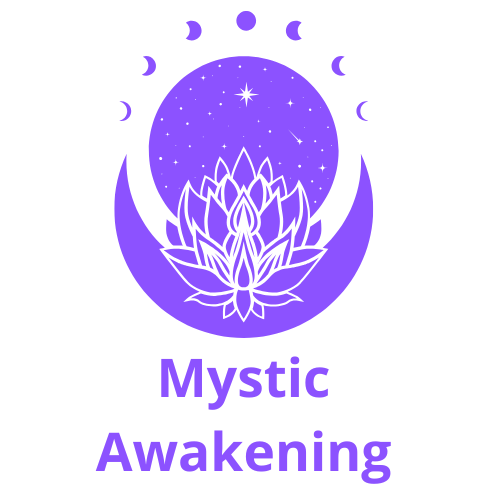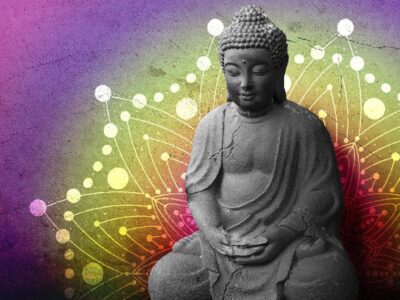
5 Essential Steps for Healing Trauma with Spirituality

Trauma can leave us feeling isolated, overwhelmed, and disconnected from our true selves, yet spirituality offers a powerful path to process pain and rediscover inner strength. In a fast-paced, demanding world, many are seeking holistic solutions beyond conventional therapies. This article outlines five essential steps to heal trauma through spiritual practices, blending ancient wisdom with modern insights to guide you on a transformative journey. Whether you are new to spiritual healing or looking to deepen your practice, these practical tips will empower you to heal traumatic experiences and foster lasting resilience.
Understanding Trauma and Spiritual Healing
Trauma can manifest in various forms and may stem from a range of life experiences. Many struggle with the emotional, psychological, and physical impacts of traumatic events. Recognizing the origin of trauma is the first step toward healing. It is important to remember that trauma does not define you—it is an experience that calls for a compassionate, holistic approach, a cornerstone of spiritual healing.
Spiritual healing expands on conventional therapies by addressing energy imbalances within both body and spirit. Integrating spiritual practices into your recovery can help you access a deeper sense of connection, meaning, and inner wisdom. Techniques such as prayer, meditation, and energy work complement traditional treatments, opening up vital pathways to recovery.
Research has increasingly shown that incorporating spirituality into trauma recovery offers significant benefits. Studies from reputable institutions indicate that survivors engaging in spiritual practices often report reduced anxiety and depression. In essence, spiritual healing repairs the inner wounds that persist long after visible scars have faded.
Embracing a Holistic Perspective
A holistic approach to healing recognizes that our mind, body, and spirit are interconnected. This viewpoint challenges the compartmentalized nature of modern medicine. When we consider trauma holistically, we begin to understand the intricate relationships between our emotions, physical well-being, and spiritual purpose.
Embracing this all-encompassing perspective is crucial for healing deep-seated wounds. The holistic model views every cell and energy pathway as vibrantly alive, encouraging practices that restore balance across all aspects of our being. This approach goes beyond treating symptoms; it nurtures the entirety of who we are.
Many ancient and mystical traditions have maintained that imbalances in our energy fields can lead to physical and emotional ailments. Workshops, seminars, and retreats focused on holistic healing are becoming more popular as they provide essential tools for achieving inner equilibrium. This model not only supports trauma recovery but also promotes ongoing personal growth.

Practical Spiritual Practices for Healing Trauma
Practical spiritual practices form the backbone of a holistic healing journey. They create structured routines that help manage emotions and bring about a sense of stability. This section highlights various practices embraced by mystics and healers for centuries, while adapting them for today’s world.
Meditation is one of the most transformative practices available. It encourages deep self-reflection, helping you confront and understand your pain. Combined with techniques like guided imagery and affirmations, meditation can help you reshape the internal narratives that keep traumatic memories alive. Practices such as journaling and mindful breathing also play essential roles in processing complex emotions.
Energy healing is another critical component. Techniques such as Reiki, chakra balancing, and focused breath work restore the natural flow of energy throughout your body. These methods operate on the principle that energy imbalances are often at the root of emotional disturbances. Addressing these imbalances lays the groundwork for a deep, enduring healing process.
Meditation and Its Benefits
Meditation is far more than a relaxation technique—it is a gateway to profound self-awareness. Regular practice can reduce post-traumatic stress symptoms, enhance mental clarity, and boost overall emotional health.
Adding just a few minutes of focused breathing and mindful reflection to your daily routine can harmonize your inner environment and pave the way towards a balanced state of being.
Energy Healing: Reiki and Chakra Work
Energy healing practices such as Reiki offer an alternative approach to traditional trauma treatments. Reiki practitioners channel healing energy to unblock emotional barriers and promote recovery.
Similarly, chakra work focuses on balancing your body’s energy centers. When these centers are misaligned or blocked, trauma can intensify the imbalance. Whether you work with a skilled practitioner or learn techniques yourself, energy healing can be a transformative addition to your recovery journey.

The Role of Mindfulness and Meditation
Mindfulness and meditation are central to the process of spiritual healing, playing a significant role in trauma recovery. Mindfulness means being fully present and accepting the current moment without judgment. It allows you to see your thoughts and feelings as transient, rather than defining parts of your identity.
These practices help break free from negative thought cycles that often accompany traumatic memories. By focusing on the present moment, you create a space where healing is possible. Mindfulness opens a portal to deeper self-understanding and universal connection.
When mindfulness is combined with meditation, the benefits are enhanced even further. Numerous studies confirm that regular practice can lower stress levels, improve sleep quality, and boost emotional stability. For more insights, references from the Mayo Clinic or Harvard Health can augment your understanding of these powerful techniques.
Cultivating a Supportive Environment for Transformation
Healing trauma is a journey best not walked alone. A supportive network and a nurturing environment are essential for recovery. Whether through community groups, spiritual mentors, or holistic therapy centers, empathetic support plays an integral role in your healing process.
Being part of a community that respects and understands your journey can ease feelings of isolation. Connecting with like-minded individuals who share your path can create a profound sense of belonging. Support networks offer safe spaces to share experiences and practical advice, making the challenging journey of healing more manageable.
Moreover, physical spaces like meditation centers, retreat facilities, and community gardens act as catalysts for change. These environments promote mindfulness, self-reflection, and healing. Reach out to local spiritual groups or join holistic healing workshops to experience the transformative impact of supportive communities.

Content Additional
To further understand the transformative power of spirituality in healing trauma, it is important to appreciate the multi-layered nature of this journey. Modern spiritual teachings remind us that we are a blend of energies and experiences, and when harmonized, these can lead to profound inner transformation. Drawing on ancient wisdom from traditions like Ayurveda, Traditional Chinese Medicine, and indigenous shamanic practices, holistic healing is seen not just as an alternative therapy but as an integrated lifestyle that nurtures body, mind, and spirit.
Today’s practitioners emphasize that healing trauma is not a linear process but a dynamic journey that demands ongoing self-care and compassion. Incorporating daily rituals, such as setting intentions with meditation, journaling, or sacred rituals, anchors you during turbulent times and reinforces the idea that healing is continuous. Additionally, insights from renowned spiritual teachers like Deepak Chopra, Brené Brown, and Marianne Williamson offer valuable perspectives on navigating the intersection of trauma, spirituality, and personal growth.
Structured group activities, such as group meditation, spiritual retreats, and healing workshops, also enhance the recovery process. These communal experiences enable individuals to collectively address and heal from shared traumas. With mutual support and shared vulnerability, participants often experience breakthroughs that can be difficult to achieve alone, reinforcing the idea that healing is a collective process that bridges the gaps between hearts and minds.
Healing trauma through spirituality is a profound journey that involves inner work and external support. By understanding trauma, adopting a holistic approach, practicing spiritual techniques, integrating mindfulness, and nurturing a supportive community, you create a path to a renewed life filled with hope and strength. Every step you take reflects your resilience and the transformative power of spirituality. Continue exploring, learning, and healing, because your journey is uniquely yours and immensely valuable.



Deja una respuesta